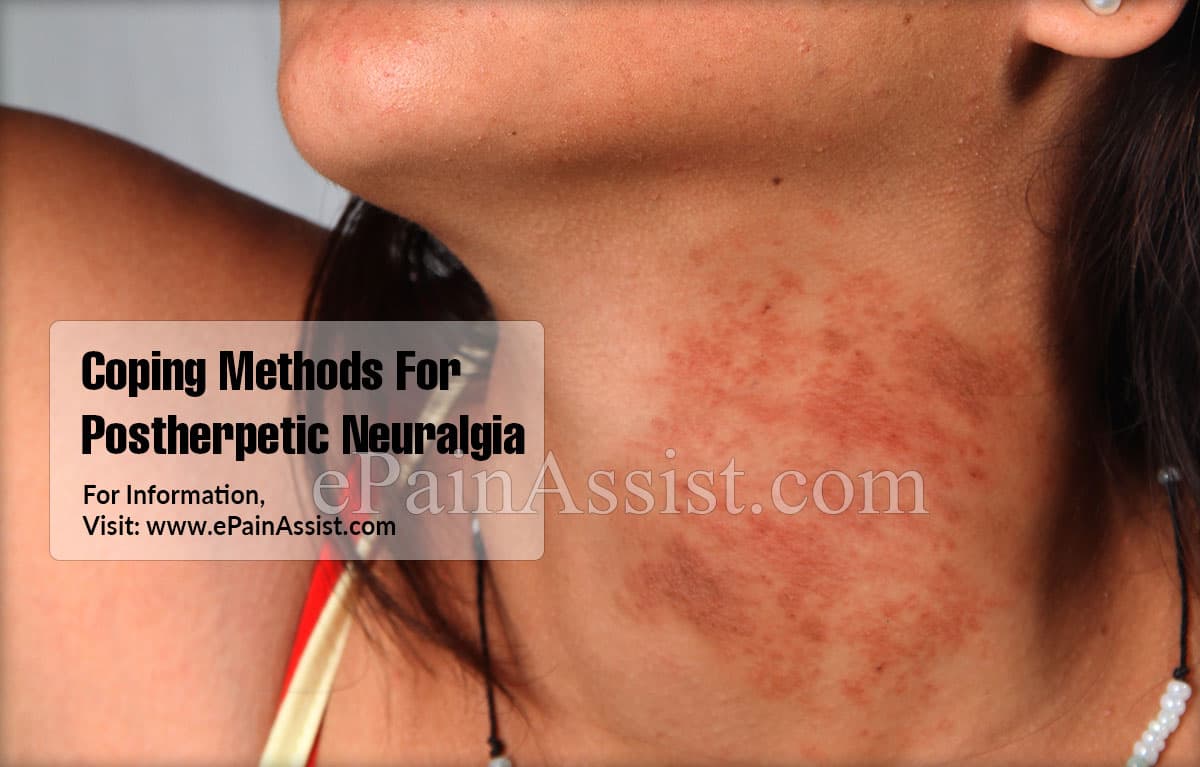Postherpetic neuralgia is a painful condition that is one of the most frequent complications of acute herpes zoster infection. Herpes zoster is a localized rash that resembles localized chickenpox and is often referred to as “shingles“. Postherpetic neuralgia can last a lifetime after the manifestation and has major implications for the quality of life of the patient and the utilization of health care resources1.

Coping Methods For Postherpetic Neuralgia
Postherpetic neuralgia is a difficult condition to live with. The pain can be intense, hampering daily activities and normal life tasks. The rashes are usually sensitive to touch; even wearing clothes become a problem for many. Some of the coping methods to deal with the condition are2,3:
Preventing Postherpetic Neuralgia: A most effective way to cope with postherpetic neuralgia is to prevent the disease by taking antiviral medications at the onset of the medical condition. Antiviral pharmacological prophylaxis as soon as possible: ideally within 72 hours of early warning signs (rash), and must be continued for 7-10 days (disappearance of symptoms). These medications also help alleviate pain in the acute phase of the disease and accelerate healing. Therefore, it is recommended that people over the age of 60 must go for the herpes zoster vaccination. If post-herpetic neuralgia is already evident, a combination of treatments that are useful for reducing pain is usually applied.
Topical Treatments: Application of gel, or ointment based lidocaine 5% in the area concerned may offer temporary pain relief. The less effective, but potentially useful application includes the use of capsaicin based topical ointments (0.025 to 0.075%) or aspirin in diethyl ether.
Systematic Treatments: Use of tricyclic antidepressants in small doses is effective, particularly when taken in the evening. Consult your doctor before taking these medicines. Some of the potential main relieving medicines such as paracetamol and opioid oxycodone and tramadol can also be used. Certain anticonvulsant may reduce the pain associated with postherpetic neuralgia.
Use Of Corticosteroids: Corticosteroids have a powerful anti-inflammatory effect, which could minimize nerve damage and thus relieve or prevent the pain experienced by people suffering from this condition. However, some of the clinical trials failed to establish the effectiveness of corticosteroid in controlling postherpetic neuralgia.
Vaccination: Zostavax is indicated for vaccination of individuals above 60 years of age in order to avoid shingles and post-herpetic neuralgia associated with it. The vaccine can reduce the risk by 50%, according to recent studies.
Avoid Stress: Learn how to deal with stress effectively if you cannot avoid it. Try to remain stress-free as far as possible.
Keep Away Mental Health Issues: Postherpetic neuralgia often causes depression and emotional distress to the patient. It is important to keep yourself motivated, cheerful, and positive. A positive outlook usually helps in dealing with the disease better.
Have A Good Sleep Schedule: In postherpetic neuralgia, adequate sleep is a significant component of keeping you healthy. Try to maintain a specific sleep schedule by going to bed and waking up at a specific time every day, including weekends. Sleeping for at least 8 hours a day is necessary.
Perform A Moderate Level Of Exercise Every Day: Daily exercise helps to reduce pain related to postherpetic neuralgia by improving muscle strength and increasing daily activities. Other symptoms of the disease also remain in check due to exercise.
Have A Nutritious And Healthy Diet: Your daily diet should have adequate nutrition. Refrain from having junk food to avoid added complications. Having a regular healthy diet will help you heal the disease quicker and will boost your immune system4.
Conclusion
There are various proposed therapies for the treatment and cure of postherpetic neuralgia, but most of them have limited effectiveness. Prevention of the disease that develops after experiencing zoster is a better approach to cope with it. Although it does not pose any life risk, the condition is extremely painful that hampers normal life activities and quality. The disease requires a lot of patience and adherence to the treatment protocol. Early-onset of treatment and providing pain relief are the main options for coping with the disorder.
- Thakur R, Philip AG, Weeks JC. Postherpetic Neuralgia. Practical Guide to Chronic Pain Syndromes: CRC Press; 2016:46-65.
- Jones RCW, Lawson E, Backonja M. Managing neuropathic pain. Medical Clinics. 2016;100(1):151-167.
- Forstenpointner J, Rice AS, Finnerup NB, Baron R. Up-date on Clinical Management of Postherpetic Neuralgia and Mechanism-Based Treatment: New Options in Therapy. The Journal of infectious diseases. 2018;218(suppl_2):S120-S126.
- Mallick-Searle T, Snodgrass B, Brant JM. Postherpetic neuralgia: epidemiology, pathophysiology, and pain management pharmacology. Journal of multidisciplinary healthcare. 2016;9:447.
Also Read:
- Postherpetic Neuralgia: Causes, Risk Factors, Signs, Symptoms, Treatment, Investigations
- How To Diagnose Postherpetic Neuralgia & What Is The Best Medicine For It?
- Is Postherpetic Neuralgia A Serious Condition & Can It Be Reversed?
- What Are The First Symptoms Of Postherpetic Neuralgia & How Do You Test For It?
- What Is The Best Treatment For Postherpetic Neuralgia?
- What Is The Prognosis For Postherpetic Neuralgia?
- Can Gabapentin Prevent Postherpetic Neuralgia & What Else Helps?
